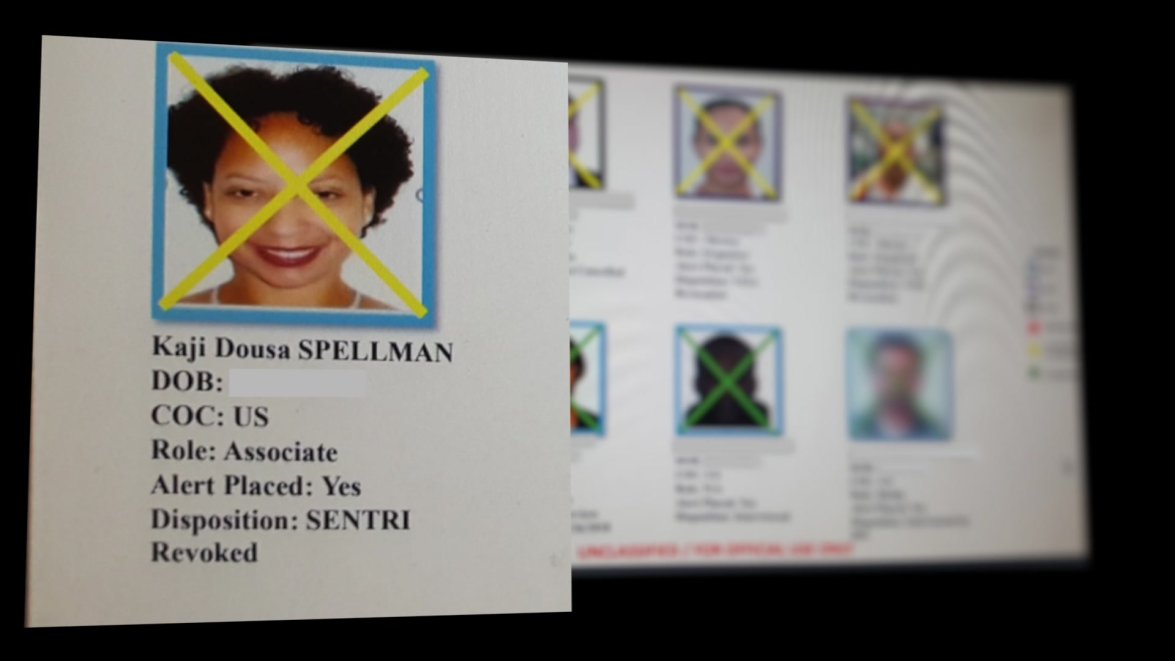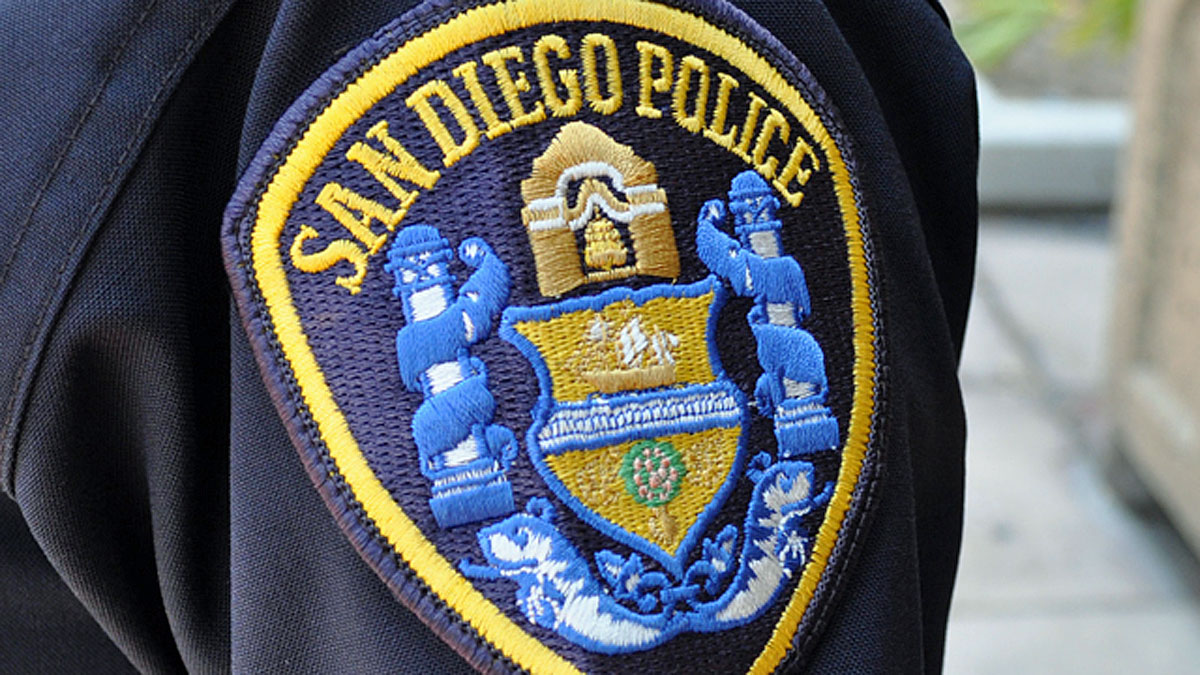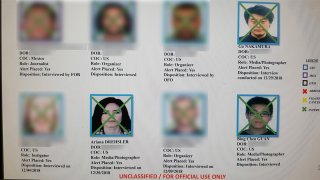
It was a revelation that made global headlines four years ago: NBC 7 uncovered a secret surveillance effort by San Diego border agents who were tracking the movements of journalists, attorneys and humanitarian aid workers who were crossing the U.S.-Mexico border.
All of those targeted for surveillance were suspected by government agents as being connected or tied to a caravan of thousands of Central American migrants approaching the southern U.S. border in late 2018 and early 2019.
The agents were working under “Operation Secure Line” – the codename given for the government’s response to that caravan’s approach.
Now, after filing a lawsuit against the chief federal agencies involved with that surveillance effort, NBC 7 San Diego and the Reporters Committee for Freedom of the Press (RCFP) are sharing publicly all of the documents it has obtained to date: The Secure Line Files.
Get San Diego local news, weather forecasts, sports and lifestyle stories to your inbox. Sign up for NBC San Diego newsletters.
To view ‘The Secure Line Files,’ click here or view below.
The nearly 4,000 pages of records, emails and weekly reports offer a glimpse into Operation Secure Line’s inner workings and priorities, including how agents attempted to discern which individuals or organizations were responsible for leading the Central American caravan to the southern U.S. border, individuals suspected of sparking violence with border personnel, and those accused of aiding migrants trying to cross the border illegally.
In the midst of the caravan’s arrival in Tijuana in late 2018, the emails released show Secure Line agents created a surveillance list of “Suspected Organizers, Coordinators, Instigators and Media,” tied to the migrant caravan.
NBC 7 learned about the effort after a Special Agent with Homeland Security Investigations (HSI) out of San Diego shared screenshots of a PowerPoint presentation the agents were using, which featured the photos, names and other personal details of 59 individuals agents were monitoring as part of the intelligence-gathering effort.
The list included 10 journalists, three attorneys and dozens of immigration aid workers.
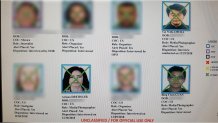
To view the full list, click here.
Nearly half of those listed also had accompanying Word documents compiled on them, or “dossiers,” as the HSI Special Agent source called them, according to screenshots shared with NBC 7.
In one of those documents for a U.S.-based immigration attorney, Secure Line Agents included details on the woman’s travel and work history, mother’s name, the car she drove and her DMV license photo.
Records would later confirm the PowerPoint surveillance list was shared with agents from several different federal and local agencies, including the San Diego County Sheriff’s Department and the FBI.
While the HSI Special Agent who shared screenshots of the surveillance list initially contacted NBC 7 as a confidential source, he later identified himself as Wesley Petonak, and explained why he chose to leak the information publicly.
As Petonak explained — and a Department of Homeland Security Office of Inspector General (OIG) report later concluded — many of the targets who were on the surveillance list were U.S. citizens who had broken no laws, yet by having their name on this list, the individuals were flagged every time they crossed through a U.S. Customs and Border Protection (CBP) checkpoint, whether it was at a border checkpoint or at an airport abroad.
A spokesperson for CBP told NBC News back in 2019 that everyone listed in the PowerPoint surveillance list was allegedly present during violent incidents that broke out at the border in November 2018, and that journalists were tracked so that the agency could learn more about what started those violent incidents.
Many of the targets NBC 7 spoke to denied that they were ever present for violent encounters between migrants and border agents.
Instead, as a result of their names being flagged, those targets said they were subjected to secondary screenings and interviews with border agents that lasted for hours, had alerts or “lookouts” placed on their passports, or worse, the individuals were denied access to Mexico altogether.
In fact, the DHS OIG’s report would later find CBP “inappropriately asked Mexico to deny entry to at least 14 U.S. citizens” included on the list, and that agents who shared the PowerPoint presentation with Mexican officials “did not comply with CBP policies on sharing information with foreign agencies and did not retain communication records,” another violation of CBP policy.
The OIG’s report noted that, “Lookouts that CBP placed on a particular group of journalists raise[d] the most serious concerns,” though the [OIG] found "no evidence in emails or interviews that [CBP] placed these lookouts... to harass the journalists or for any other ulterior reasons.”
The fact that journalists were named among those targets is what got the attention of the Reporters Committee for Freedom of the Press.
“The allegations that the government surveilled members of the news media, including the allegation that the government had in some instances placed alerts on reporters' passports, are disturbing and demand public scrutiny,” RCFP attorney Katie Townsend said.
The RCFP, in partnership with NBC 7, sued several federal agencies for all records related to the creation of that list, and the inner workings of the organizations behind it.
District Court Judge Reggie Walton of the District of Columbia ordered CBP and other agencies to release the records, and the agencies have been doing so on a nearly monthly basis since December 2019.
The records include memos, presentations, reports and internal emails between U.S. agents working for CBP, HSI, Immigration and Customs Enforcement (ICE), and the “ILU-OASSIS-OMEGA” – an International Liaison Unit, which coordinates intelligence gathering efforts between Mexico and the United States.
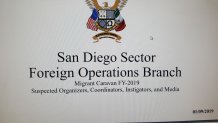
A majority of the records pertaining to the Operation Secure Line effort came from CBP.
The release of this information is a start, but Townsend believes there may be new revelations to come out in the future and more to learn from the surveillance effort.
Townsend said, “While the release of these records is a victory for transparency, the litigation is ongoing, and we anticipate that additional information will come to light.”

